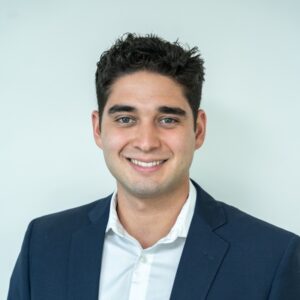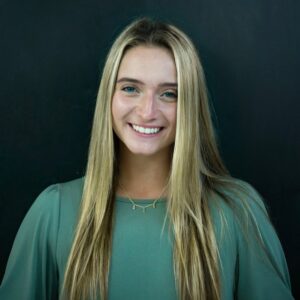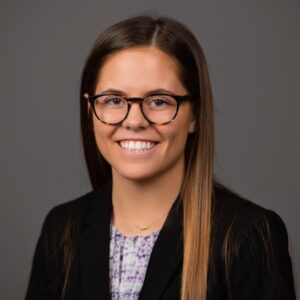GCMI’s Spring 2023 Capstone Spotlight on Team LifeSTEM
“Gliomas are brain tumors that come in multiple forms ranging from low-grade, benign tumors to high-grade, malignant tumors including glioblastomas. Glioblastoma treatment involves surgical resection, chemotherapy, and radiation. However, these tumors are typically incompletely resected, so there is a 90% recurrence rate [for a course of treatment, care and procedure costing approximately $200,000]. While implantable devices currently exist for the delivery of drug-based therapies, there is no device designed for the delivery of cell therapy to the brain to treat gliomas. This presents a challenge as the initial administration of cell therapies is done in the operating room upon surgical resection, and another invasive surgery is required if another round of cell therapy treatment is to be administered.”
So states the Georgia Tech 2023 Capstone Program Biomedical Engineering Team AdvanCED.
Their project statement continues, “To address these challenges, we created LifeSTEM – a revolutionary, neurological, implantable device designed for the local delivery of stem cells to treat patients with brain tumors. LifeSTEM utilizes a multi-chamber reservoir for targeted, local delivery of the therapy, a guiding sleeve and catheters that are customizable in length to account of variability in patient anatomy and tumor location, as well as perforated catheter tips to allow for radial diffusion of the therapy and minimize potential reflux. This device has the potential to reduce the risk of additional surgical procedures and extend patient lifespan. Our current focus on the delivery of mesenchymal stem cells has revealed just the tip of the iceberg of potential in the space, as expansion could include delivery of CAR T-cells, extracellular vesicles, nanoparticles, microRNA, drug therapies, as well as other neurological and non-neurological diseases.”
Team AdvanCED was one of four Spring 2023 Capstone Teams GCMI proudly supported with our medtech design and development capabilities including our industry leading preclinical facilities and staff.
Addressing the Unmet Clinical Need Straight from the Source: Mayo Clinic
Originating from a problem statement by the Mayo Clinic including Dr. Alfredo Quinones-Hinojosa and his research fellows, the team members were drawn to the strong unmet clinical and patient need, a fascination with neurology and potential to gain exposure to the operating ‘theater’ in a very real, direct way.

Juan Martinez
“Witnessing the surgical team in action during our early visits to Mayo focused on additional problem discovery and very much opened our eyes to the nature of the unmet need for clinicians – and the patients in their care, of course,” said AdvanCED team member Juan Martinez.
“Dr. Q’s passion for his work and his mentorship kept our enthusiasm and motivation for this project high,” said Victoria Kabat. “He continuously encouraged us to aim high and believe in our ability to meaningfully advance a solution to the unmet clinical need.”
“We were also able to learn from Dr. Q’s research fellows about the properties of stem-cells,” said Victoria. “But the ‘fixed-state’ cadaveric testing we did with the Mayo team was limited to proof or confirmation of concept for diffusion patterns and reflux reduction. This was due to the significant differences in tissue that has been suspended in formaldehyde versus live tissue, or tissue from a very recently deceased specimen.”
More Closely Mirroring the Environmental, Clinical and Physical Demands of the Unmet Clinical Need

Victoria Kabat
GCMI’s preclinical staff helped Team AdvanCED measure contrast flow rates and diffusion patterns or signatures for their device in a cadaveric porcine brain with properties much more ‘like’ a neurosurgeon and team would experience when treating people fighting cancerous gliomas.
“Testing always goes a bit different than you expect, especially when it involves two different types of fluids with different viscosities,” Victoria said. “How those properties impact seals and system materials create considerations and needs that are not always obvious or anticipated.”
“Nothing ever works as expected the first time around,” Juan said. “Manufacturing at different scales creates different challenges. Trial, error, testing and tweaking will always be part of the process for this type of innovation.”
“In addition to the organ and its properties much more akin to what a surgical team would encounter, the GCMI staff helped us gain high value imaging thanks to the onsite, in OR, c-arms, and operation and observation of the infusion pump to ensure the desired flow rates were achieved for the entirety of the test duration,” said Isabella Varea. “This help, along with the preparation and set up, gave us enough of an idea of how the device actually works in a more realistic clinical scenario, how it can be improved and how Dr. Q and his team can effectively carry it forward.”

Isabella Varea
“Our device is modeled somewhat closely to an Ommaya reservoir, but because delivery of cell therapies for this condition in this way is so novel, we imagine the regulatory pathway will be intensive to say the least,” Victoria said.
The team submitted the results of its work to Dr. Q and company as proof of concept. They believe, based on the positive feedback from his team and the Mayo regulatory board, that Mayo will forge ahead with additional grant applications and a patent application leaning heavily on Team AdvanCED’s proof of concept work; work that will be intensive given the likelihood of an FDA Class III regulatory pathway for the technology.
We wish the team the very best for their futures including Victoria’s law school endeavors and work with Perkins Coie as a technical advisor, Isabella’s post-bac work with the NIH’s National Heart, Lung, and Blood Institute, and Juan’s entry into industry as a systems integration engineer at Neocis, maker of a robotic system for dental implants.
